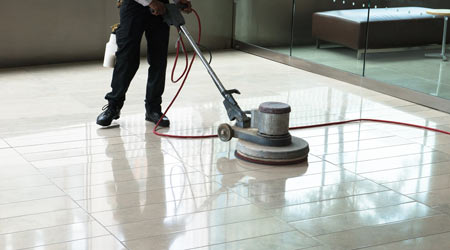
Supplied by Impact Products.
Most floor pads used for stripping, scrubbing, and burnishing are manufactured with polyester, derived from non-renewable sources, such as fossil fuels and petroleum byproducts. Furthermore, these are non-renewing sources, meaning these pads typically end up in landfills where they take years — even decades — to degrade.
With the industry adopting green cleaning strategies and promoting sustainability, such traditional floor pads are losing their footing among purchasers. However, according to Robb Borgen, vice president of marketing at Impact Products, the types of “green” floor pads that are replacing these traditional floor pads is raising some confusion.
“There is confusion because not all environmentally responsible floor pads are biodegradable,” says Borgen. “While a pad may have sustainability attributes on one end, it may not have any on the other end.”
According to Borgen, the following are the pros and cons of the three most common environmentally responsible floor pads:
PET pads: These are floor pads made from 100 percent post-consumer recycled terephthalate (PET) fibers, derived from plastic water and soda bottles. While these pads are made from recycled materials, PET pads are usually not recyclable themselves; they can be re-melted and used again but only if resin and mineral adhesives were not added in the manufacturing process.
Hog hair pads: Some pads are now made of hog hair or a blend of hog hair and polyester. The result is a very effective, smooth material that is perfect for polishing and burnishing. While hog hair is a renewable resource, if it has been blended with polyester, the pad may include non-renewable resources and take years to biodegrade.
Sugar/corn pads: Made by at least one manufacturer, these floor pads are made from renewable, plant-based materials, such as sugar, corn, feedstock, and other renewable resources.
Unlike the other pads just mentioned, these pads do biodegrade relatively quickly so they do not accumulate in landfills.
“Affordability, durability, and performance are always concerns when it comes to selecting floor pads,” adds Borgen. “Fortunately, most environmentally responsible pads have proven to be as effective, if not more effective, than traditional pads.”

 The Down and Dirty on Cleaning in Virus Season
The Down and Dirty on Cleaning in Virus Season How Surfactant Use is Expanding in Commercial Cleaning
How Surfactant Use is Expanding in Commercial Cleaning Operational Excellence Series 2025: Better Budgeting
Operational Excellence Series 2025: Better Budgeting